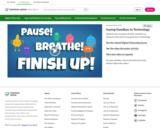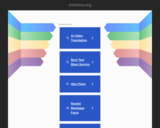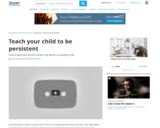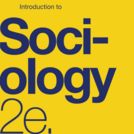
Find out what happens when Arthur's friendly teasing goes too far. [13:07]
- Subject:
- Health and Physical Education
- Material Type:
- Interactive
- Provider:
- PBS LearningMedia
- Date Added:
- 11/06/2023

Find out what happens when Arthur's friendly teasing goes too far. [13:07]

This site from The Blue Book of Grammar and Punctuation contains seven rules for correctly using the hyphen, along with examples for each of the rules.

Learn about one town's conflict over the issue of spraying pesticides to combat disease-carrying insects, in this video segment from Greater Boston.

Industrial hygienists are specialists in the field of occupational health and safety. They analyze health hazards in the workplace.

In this video, students learn to pause, breathe, and finish up whenever they have to say goodbye to technology. Includes Spanish version and a link to related lesson materials. [0:54]

In this video segment adapted from LOKE Films and the Arctic Monitoring and Assessment Programme, learn how human populations in the Arctic are affected by industrial contaminants in the food chain.

This video segment from Greater Boston examines whether environmental toxins may be to blame for a rare skin disease.

Read about how peer pressure can negatively influence your decisions, particularly decisions about drug abuse. Learn the importance of thinking for yourself and of making healthy choices when it comes to drugs.

Be aware of the pressures around you, learn how to resist peer pressure, and keep a "pressure journal" to record and think about the ways in which you are faced with peer pressure every day.

How can you treat others with respect, particularly those who are different from you? Discuss this question with the help of writing prompts, activity ideas, and more.

Learning how to stick to a task until it's done is an important life lesson. This video offers parents ways to encourage their child to keep trying by breaking goals down into steps and teaching that it's ok to make mistakes. [2:38]

Learn about a study in which participants discovered contaminants in their homes, and how green chemistry may provide alternatives to such everyday toxins, in this video adapted from Contaminated Without Consent.

Intensive pronouns add needed emphasis to a sentence. While they function similarly to reflexive pronouns, they differ in that the pronoun can be removed without altering the meaning of the sentence. [0:57]

Introduction to Sociology 2e adheres to the scope and sequence of a typical, one-semester introductory sociology course. It offers comprehensive coverage of core concepts, foundational scholars, and emerging theories, which are supported by a wealth of engaging learning materials. The textbook presents detailed section reviews with rich questions, discussions that help students apply their knowledge, and features that draw learners into the discipline in meaningful ways. The second edition retains the book’s conceptual organization, aligning to most courses, and has been significantly updated to reflect the latest research and provide examples most relevant to today’s students. In order to help instructors transition to the revised version, the 2e changes are described within the preface.


Understand the difference between psychological and sociological theories of self-development
Explain the process of moral development

This video segment from a WPSU documentary Liquid Assets connects public health to the availability of clean and safe drinking water and elaborates on the threats our bodies face due to increasing kinds and quantities of pollutants.

Students are asked to explain how natural disasters affect environmental health.

Contains plans for two lessons that teach about proper classroom behavior and creating community by discussing why they are in school and what they need in order to accomplish their goals while there. In addition to objectives and standards, this instructional plan contains links to sites used in the lessons as well as assessment and reflection activities.

This video segment adapted from Rx for Survival examines malaria in sub-Saharan Africa, a disease that kills more than one million children there each year. [4:31]